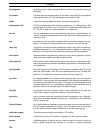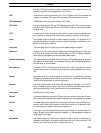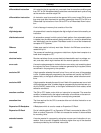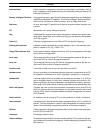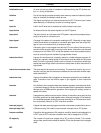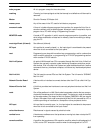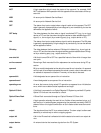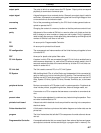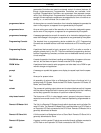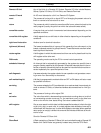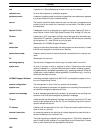
Glossary
486
NOT A logic operation which inverts the status of the operand. For example, AND
NOT indicates an AND operation with the opposite of the actual status of the op-
erand bit.
NSB An acronym for Network Service Board.
NSU An acronym for Network Service Unit.
OFF The status of an input or output when a signal is said not to be present. The OFF
state is generally represented by a low voltage or by non-conductivity, but can be
defined as the opposite of either.
OFF delay The delay between the time when a signal is switched OFF (e.g., by an input
device or PC) and the time when the signal reaches a state readable as an OFF
signal (i.e., as no signal) by a receiving party (e.g., output device or PC).
ON The status of an input or output when a signal is said to be present. The ON state
is generally represented by a high voltage or by conductivity, but can be defined
as the opposite of either.
ON delay The delay between the time when an ON signal is initiated (e.g., by an input de-
vice or PC) and the time when the signal reaches a state readable as an ON sig-
nal by a receiving party (e.g., output device or PC).
one-shot bit A bit that is turned ON or OFF for a specified interval of time which is longer than
one cycle.
on-line removal Removing a Rack-mounted Unit for replacement or maintenance during PC op-
eration.
operand Bit(s) or word(s) designated as the data to be used for an instruction. An operand
can be input as a constant expressing the actual numeric value to be used or as
an address to express the location in memory of the data to be used.
operand bit A bit designated as an operand for an instruction.
operand word A word designated as an operand for an instruction.
operating error An error that occurs during actual PC operation as opposed to an initialization
error, which occurs before actual operations can begin.
Optical I/O Unit A Unit that is connected in an Optical Remote I/O System to provide 8 I/O points.
Optical I/O Units are not mounted to a Rack.
Optical Slave Rack A Slave Rack connected through an Optical Remote I/O Slave Unit.
OR A logic operation whereby the result is true if either of two premises is true, or if
both are true. In ladder-diagram programming the premises are usually ON/OFF
states of bits or the logical combination of such states called execution condi-
tions.
output The signal sent from the PC to an external device. The term output is often used
abstractly or collectively to refer to outgoing signals.
output bit A bit in the IR area that is allocated to hold the status to be sent to an output de-
vice.
output device An external device that receives signals from the PC System.



